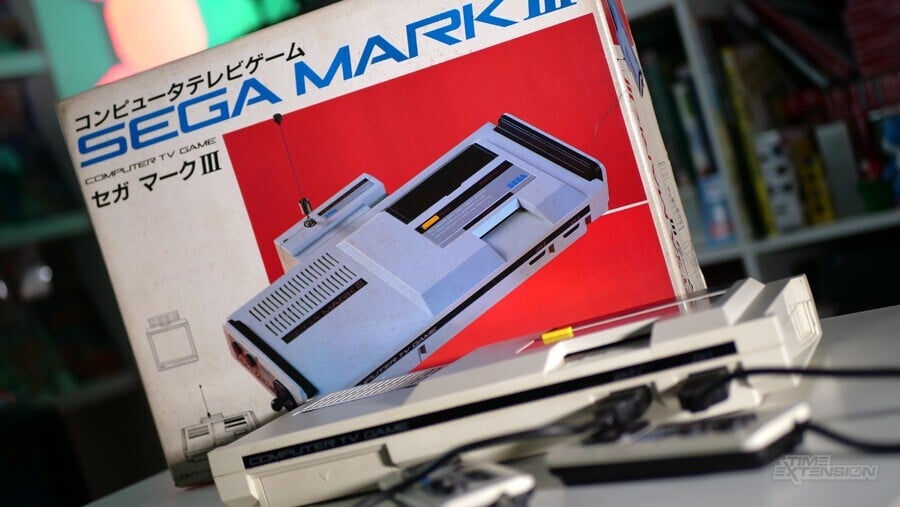
Released in 1985, the Sega Mark III is, as the same suggests, the company's third attempt to crack the home console market following the SG-1000 and the SG-1000 II. Those two systems struggled to assert themselves in Japan thanks to the dominance of Nintendo's Famicom, and while the Mark III was a massive improvement – it was even more powerful than Nintendo's console – it too failed to make a dent in the market.
The Sega Mark III's legacy would be felt more keenly on the global stage; it would lay the template for the Master System, which is effectively the Sega Mark III in a different case. While this system would struggle in North America and Japan (it was released in the latter region in 1987, the year before the Mega Drive made its debut), it was much more successful in Europe and Brazil. The Sega Mark III retains backwards compatibility with SG-1000 games thanks to the fact that the cartridges are the same shape.

This system shares a lot of visual similarities with the SG-1000 II – so much so that the two are often confused for one another. Like the Famicom, it has controllers which can be slotted onto the sides of the console when not in use – but these pads use the DE-9 port, which would also be found on the Master System and Mega Drive. The pads also have optional screw-in joysticks but are a little on the small side.
There's an expansion slot on the front which houses the FM Sound unit, and there's also a card slot for Sega 'My Card' software; this was designed to be a low-cost alternative to cartridges but was impacted by the small amount of data it could hold. For the first eight months of the console's lifespan, no cartridge games were produced – the entire library was made up of My Card releases.
Thanks to its sleek design and low sales (it topped out at 1.7 million sales in Japan), the Sega Mark III is now a sought-after collector's item; even unboxed, it fetches high prices on the secondary market. It also had some interesting accessories, including the Telecon Pack, which allows the console to connect to a TV set wirelessly.

